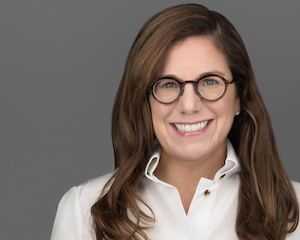By Amy Schabacker Dufrane
What’s the biggest problem being faced by HR professionals right now? It can be summed up in one word: change. In 2025, the world is grappling with an abundance of change and while change is an opportunity for exciting growth and innovation, it’s also disruptive and uncomfortable. The uncertainty that goes with change can trigger stress for some employees, bringing their productivity to a standstill. For others, it’s a chance to develop and showcase new skills. Hating change or loving change might be directly correlated to your culture. The reality is that you’ll most likely observe different degrees of struggling or embracing change across your workforce. And you need to prepare to manage it.
What defines change is as varied as your workforce and what concerns them. Climate change. A new political administration and power struggles. Rapid advancements in artificial intelligence. Concerns about inequality, the price of eggs, healthcare costs, returning to the office, and military conflicts. What is indisputable is the significant amount of change happening in the world and the workplace. And as the father of modern management principles, Peter Drucker, said, “The greatest danger in times of turbulence is not the turbulence – it is to act with yesterday’s logic.”
Drucker is credited with keeping people at the core of business, specifically to empower the workforce and help them achieve their goals. Having passed in 2005, his work was prescient and provides us with food for thought as we consider what lies ahead. He argued that in a world where change is constant and inevitable, we need to have systematic methods to predict change and balance change with business continuity. If we are to continually expect change, are we supporting change proactively or hiding our heads in the sand? Are we considering culture, values and employee wellbeing as part of change management or naively guessing that workers will continue to perform at 100
percent? The bottom line is that HR needs to have a change plan with goal setting that – while dynamic – provides a framework with room to grow and envisions outcomes.
Why is a change plan necessary? Consider a possible outcome of the new administration’s policies in the U.S. Dismantling federal agencies will result in the termination of federal workers, jobs that have been historically unscathed from the ups-and-downs of private sector fallouts. The outcome could potentially generate one million+ new job candidates with skills that might not map perfectly to for-profit
requisitions. Welcoming these candidates as employees might alter the ethos of the existing workforce. And jobs that were previously entrusted to the public sector might transfer to the private sector or create new start-ups that compete on some level. That’s a lot of change to absorb as it happens, underscoring the reason why a change management plan that considers different scenarios can be valuable.
As change ensues, the importance of middle management rises. Often forgotten yet always important, middle managers can be the glue that holds teams and departments together. If change involves budget cuts, HR needs to turn to technology to make sure
key leadership development programs remain in place. For example, with the growing emphasis on artificial intelligence, a change management plan could consider substituting AI-powered coaching instead of traditional coaching. Another area to consider in times of change is the importance of facilities management.
As you know, HRCI has a partnership with IFMA to help HR professionals increase their knowledge of how facilities can help create workforce alignment. It’s a natural progression, as HR already possesses the skills to consider what employees need in their workplace. Adding how the corporate office building can become a safe haven as change swirls about can be integral to a plan that looks to retain, not repel, qualified talent.
Lastly, consider the consequences of not assuming ownership of change. The HR profession has evolved significantly in recent years and time and again leaders turn to us to solve the hard problems that involve people, process, and technology. Waiting for change to land and expand within the workforce can create dire concerns that take years to resolve. Managing in times of change starts with the right training, networking,and planning to protect and lead no matter how change manifests itself.

